Lizzano in Belvedere (Bologna) is an Italian municipality renowned for its natural beauty and landscape, located entirely within the Corno alle Scale Regional Park. Green, sport and culture make this town perfect for a relaxing stay.
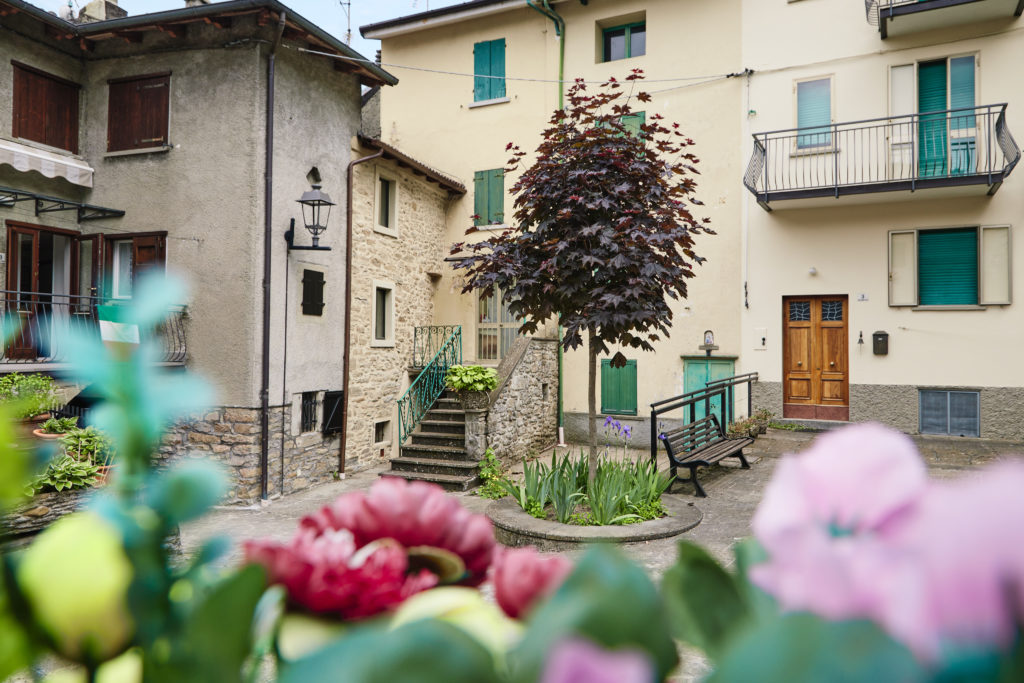
Credits: The Outdoor Lab
PLACES TO VISIT
The municipality of Lizzano in Belvedere is inextricably linked to Corno alle Scale, whose symbol is the Punta Sofia cross. At 1945 metres above sea level, the panorama is breathtaking, opening up to the Alps to the north, Florence and the port of Livorno at its feet and, on particularly clear days, it is possible to see the Tyrrhenian Sea and the islands of Sardinia, Corsica and Elba to the west and the Adriatic Sea to the east. The vegetation and flora make it a place of great interest, while sites not to be missed are Lake Scaffaiolo, the Silenzio Valley and Balzi dell’Ora.
The simplicity and harmony of the building is striking at the Sanctuary of Madonna dell’Acero, a place of the soul surrounded by monumental trees where silence induces the visitor to meditation. Built in 1500 on the site where the Madonna appeared to two young shepherds, saving them from a blizzard, the cult of the ancient sanctuary is renewed every 5 August and legend has it that the maple tree on whose branches the Madonna is said to have rested still grows on the sides of the church.
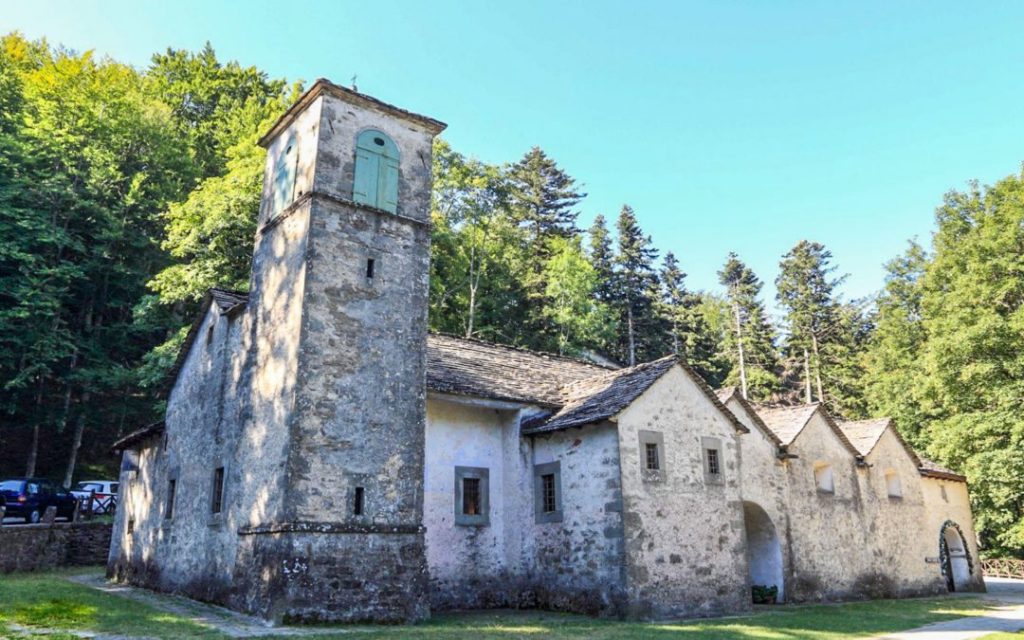
Sanctuary of Madonna dell’Acero
Outside the sanctuary is the Dardagna waterfall, the last of seven cascades on the stream of the same name before its waters soften their descent. In this almost fairytale-like place, the power of the water is clearly perceptible, putting the visitor in complete contact with nature.
A theatre of World War II, Lizzano in Belvedere was crossed by the Gothic Line, the defensive fortification built by Marshal Albert Kesselring in 1944. The Municipality of Lizzano has created a true tourist-cultural system, allowing visitors to walk a stretch of the Gothic Line as far as Marzabotto. An evocative journey down the memory lane, in an environment of enormous natural beauty capable of echoing the history of the people of the Apennines, protagonists of the partisan struggle between the autumn of 1944 and the spring of 1945.
During the summer, visitors can also cool off in the Conca del Sole municipal swimming pool water park, surrounded by the greenery of the Silla Valley and the surrounding mountains.
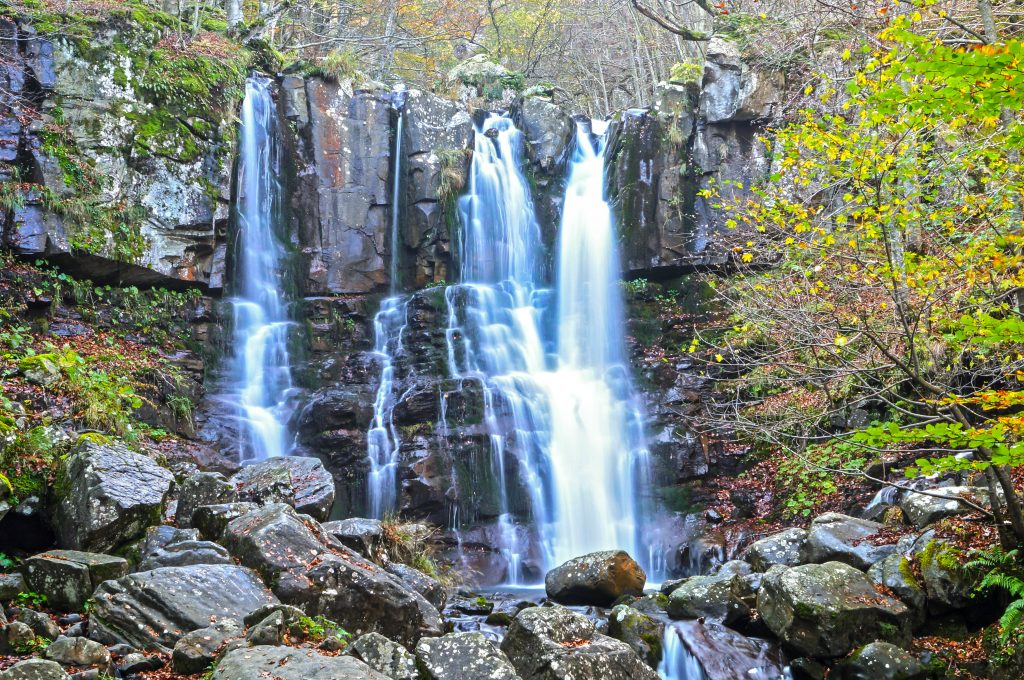
Dardagna waterfall
THE CUISINE
The Emilian culinary tradition is at home in Lizzano in Belvedere. It is the strong, decisive flavors of the local woods and mountains that dominate the local recipe book.
Chestnuts’ lasagne and tagliatelle with cupline, genuine porcini mushrooms, represent the perfect union between traditional Bolognese cuisine based on fresh pasta and the strong flavors of the mountains. Also typical of the local cuisine are fugacine, better known as ‘tigelle’ made of flour and water, fried crescentine and zampanelle, a kind of crepe made of water, white flour, salt and oil.

Fugacine
From the forest, chestnuts are abundantly used in the culinary tradition of Lizzano in Belvedere, for all kinds of dishes. Starting with chestnut flour and adding water, patolle are made to be eaten with ricotta, cheese and salami. Also typical of these mountains is castagnaccio, a poor man’s cake made with chestnut flour, water and shelled walnuts. In January, on the other hand, chestnut fritters, a simple and tasty recipe also made with chestnut flour, are preferred.
For those with a sweet tooth, there are also zuccherini montanari and rice cakes, traditionally prepared at Easter. Finally, chestnuts are used to create an excellent digestive called “chestnuts gourmand“, perfect to enjoy in front of a lit fireplace.
For fish lovers, another typical dish is Salmerino, a freshwater fish with extraordinary organoleptic characteristics, cooked in different ways depending on the season.

Zuccherini Montanari
HISTORY
The municipality of Lizzano in Belvedere boasts a rich history. Ligurians, Etruscans and Boi Gauls were probably the first peoples to inhabit these mountains of the Emilian Apennines.
In the Middle Ages the area came under the dominion of the Byzantine Exarchate, whose presence is confirmed by the name of the church of Lizzano, dedicated to San Mamante. The name ‘Massa Lizzano’ is mentioned for the first time in the document with which the Lombard king Astolfo donated the territories to Sant’Anselmo, founder of the Benedictine Abbey of Nonantola. Already at that time, the boundaries of the municipality coincided with the current ones. In 1227, the Municipality of Bologna, whose dominion extended over these territories, built a guard castle on the summit of Mount Belvedere, of which only a few ruins remain today.
More recent history sees Lizzano in Belvedere and its mountains as protagonists of the World War II, given the construction in 1944 of the Gothic Defence Line in this area. On the Riva and Belvedere mountains, two battles were fought that were decisive for the capitulation of the German armed forces.
Alongside the official history, there is a history linked to the people of the area, which can be discovered by visiting the Ethnographic Museum of Mountain Culture in Poggiolforato, where three thousand tools, furnishings and fittings are preserved, tracing the human and civil history of the entire territory.
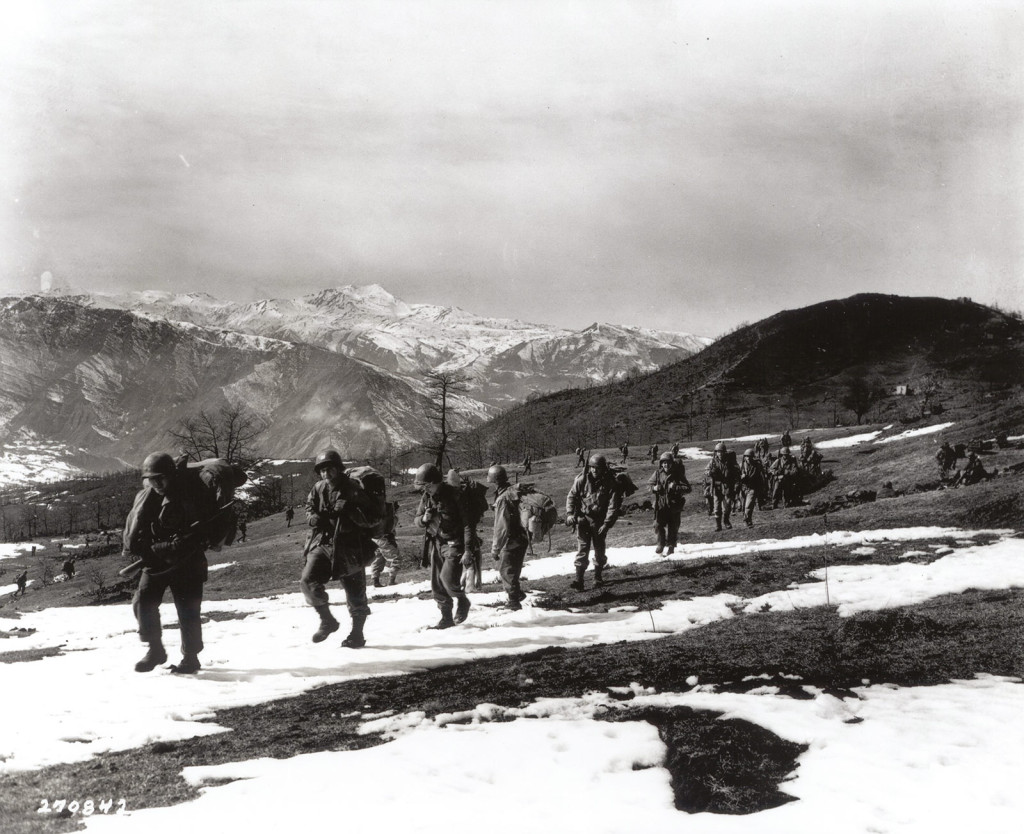
La Linea Gotica
IL PERSONAGGIO
Lizzano in Belvedere ha dato i natali al noto giornalista e scrittore italiano Enzo Biagi, nato il 9 agosto 1920 e morto nel novembre 2007. Dopo la gioventù trascorsa nella frazione di Pianaccio, Biagi si trasferì presto a Bologna dove intraprese con tenacia il suo percorso da giornalista, cominciando la gavetta per riviste studentesche.
Nel 1940 fu assunto dal Carlino Sera, ma la sua indole antifascista presto evidente lo costrinse a fuggire verso il natio Appennino. Qui Biagi sostenne e partecipò alla Resistenza, aderendo alle brigate di “Libertà e Giustizia” legate al Partito d’Azione e redigendo Patrioti, la rivista di contro-informazione partigiana.
Quando nel 1945 le forze della resistenza emiliano-romagnola e le truppe alleate entrarono a Bologna fu la voce di Enzo Biagi ad annunciare alla radio locale la liberazione della città. Oltre a scrivere per il Resto del Carlino, nella sua carriera Biagi ha collaborato con Il Corriere della Sera, Il Giornale, La Repubblica, e ha condotto diverse trasmissioni televisive su temi di storia e attualità. La più famosa è sicuramente “Il Fatto”, in onda su Rai 1 dal 1995 al 2002.
Profondamente legato alla sua terra, tornava spesso a Pianaccio dove voleva essere semplicemente un paesano. “Sono un uomo dei monti: mi piace la nebbia che fa sparire i costoni, le nuvole che scendono a un tratto. Se fossi cieco, capirei le ore ascoltando i rumori del bosco” amava ripetere mentre osservava dalla finestra di casa il profilo di quelle montagne che tanto amava. A Pianaccio è stato allestito un museo a lui dedicato.

Enzo Biagi
IL MIGLIOR PERCORSO MTB
Sopra i paesi di Lizzano in Belvedere e Vidiciatico, in località Monte Pizzo, si trova un bike park all’interno di boschi ricchi di fascino. Il percorso non offre delle pendenze impossibili ma i tracciati sono stati ben segnalati dai volontari che hanno creato questo spazio dedicato ai bikers. È possibile scegliere tra diversi percorsi dove si può far correre la propria mountain bike sulla base anche di diversi livelli di difficoltà.
Intorno al comune di Lizzano in Belvedere non mancano comunque altri percorsi da affrontare con la mountain bike, per immergersi in paesaggi naturali di eccezionale bellezza.
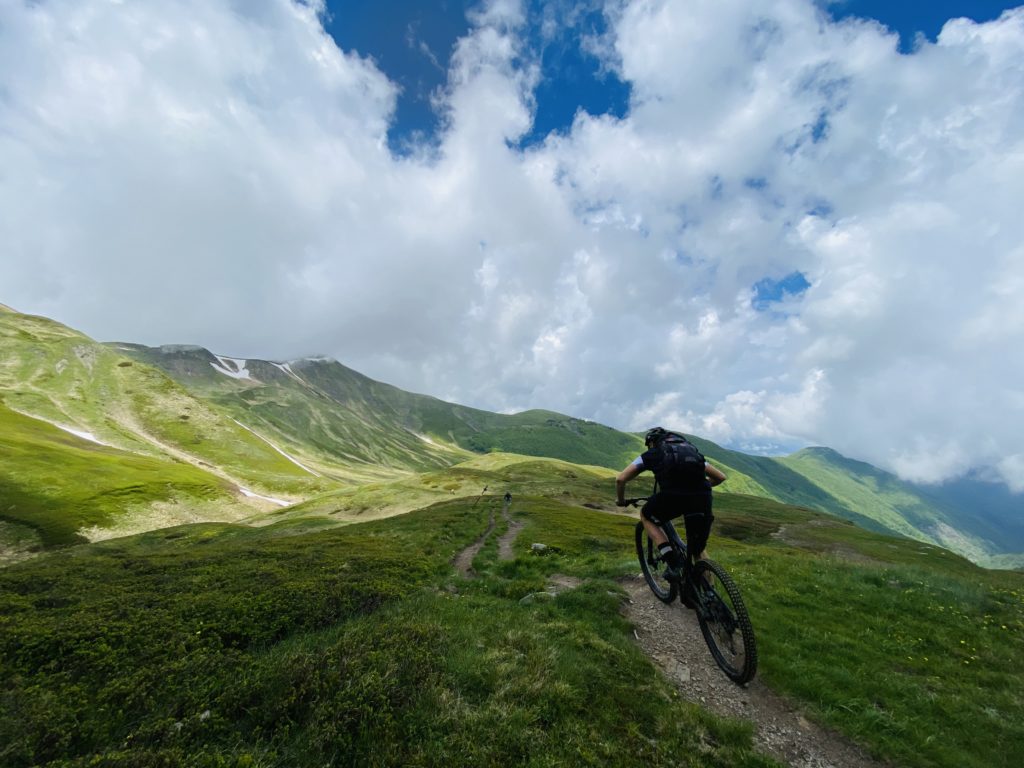
Credits: The Outdoor Lab
MUST-SEE EVENT
Many events take place in Lizzano in Belvedere and its hamlets over the course of the months. Among these, “Corno Ti Risiko!” is certainly one of the most popular: a huge open-air Risiko! game usually held in the last weekend of June.
The first weekend in July is the “Monte Acuto delle Irish”, an Irish-style evening with beer and typical dishes. At the end of July, the “Festa del Borgo” is held in Vidiciatico, recreating the atmosphere of times gone by with shows, food stands and craft markets: to pay, it is necessary to use an ancient currency, the Magalino.
Also, in Vidiciatico, on 14 August, the traditional “Giughence la Campana” takes place, a challenge between villages based on mountain games to win the coveted bell. In mid-August, Lizzano in Belvedere also hosts the “Festa del Mirtillo” (Blueberry Festival), a two-day event dedicated to the precious berry known as “the purple gold of Corno alle Scale”.
At the end of August in Vidiciatico, it is time for street food, while the first weekend in October sees the “Tartufesta”, an event dedicated to the autumn flavors of the territory. For the occasion, the town’s restaurants offer special menus based on local delicacies. During the Christmas period, a Father Christmas village is set up in the small square in Vidiciatico, which can be visited throughout the festivities and is usually inaugurated on 8th December.
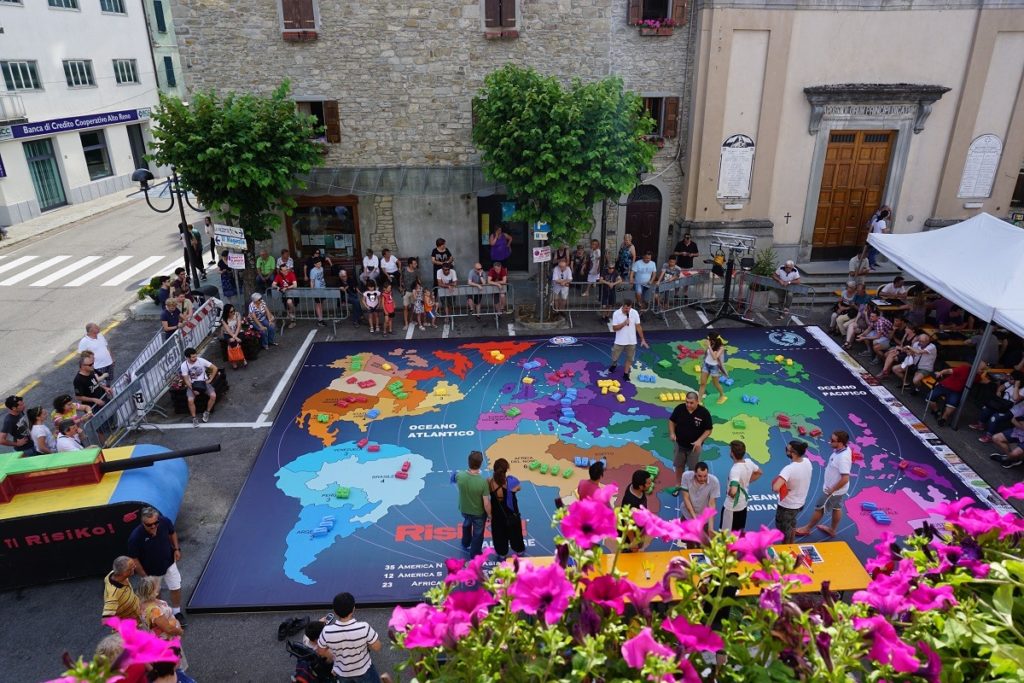
Corno ti Risiko!
COME ARRIVARE
IN AUTO:
Da Bologna: autostrada A1 fino a Sasso Marconi 5 Cerri o Sasso Marconi Nord (uscita Telepass) e poi strada statale Porrettana fino a Silla. Da qui si procede in direzione Lizzano in Belvedere/Corno alle Scale.
Da Firenze: autostrada A11 fino a Pistoia e poi strada statale Porrettana fino a Porretta Terme. Da qui si procede in direzione Silla e poi Lizzano in Belvedere/Corno alle Scale.
CON I MEZZI PUBBLICI:
Da Bologna: treno regionale Bologna/Porretta Terme e poi corriera di linea (776) fino al Corno alle Scale.
Da Firenze: treno per Pistoia e poi da Pistoia a Porretta Terme. Da qui corriera di linea (776) fino al Corno alle Scale.
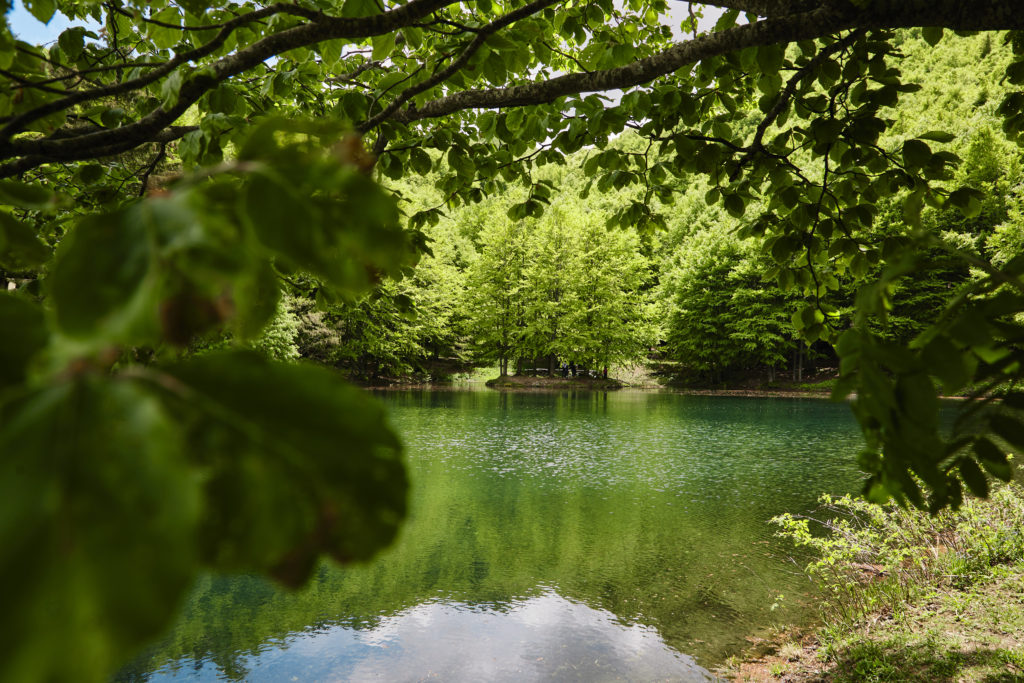
Credits: The Outdoor Lab
LIZZANO IN BELVEDERE AND APPENNINICA MTB STAGE RACE
Appenninica MTB Stage Race 2021
- Stage 2: Porretta Terme-Lizzano in Belvedere
- Stage 3: Lizzano in Belvedere-Fanano
Appenninica MTB Stage Race 2022:
- Stage 6: Porretta Terme – Lizzano in Belvedere
- Stage 7: Lizzano in Belvedere – Lizzano in Belvedere
Appenninica MTB Stage Race 2023:
- Stage 5: Fanano – Vidiciatico (Lizzano in Belvedere)
- Stage 6: Vidiciatico – Vidiciatico (Lizzano in Belvedere)
